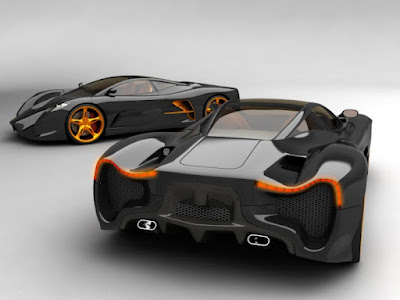Hydrogen Breakthrough - In a time when cleaner mobility has become a shared global priority, hydrogen technology is steadily gaining recognition as a promising alternative to conventional engines. This evolving conversation found an unexpected yet compelling voice in Bandung, where a group of young engineers from Universitas Pendidikan Indonesia (UPI)—known in English as the Indonesian University of Education—developed an eco-friendly motorcycle labeled FCEV Jawara, with “Jawara” meaning “Champion.” Their silent, emission-free prototype offers a glimpse of a future in which transportation leaves behind no smoke or engine noise—only a trail of water vapor that quietly replaces the pollution long associated with city motorcycles.
 |
| The FCEV Jawara eco-friendly motorcycle prototype is the work of ten students from the Automotive Engineering Education Study Program under the Faculty of Industrial Technology Education (FPTI) at Universitas Pendidikan Indonesia (UPI), Bandung. (Picture from: MediaIndonesia) |
The project began during the PLN Innovation and Competition in Electricity (ICE) 2024, a national contest joined by 30 universities in Indonesia. UPI’s team proposed a hydrogen motorcycle concept inspired by a blend of café racer aesthetics and a sporty design language. Their idea secured funding as one of the two best submissions, allowing the students to bring the prototype to life. The university backed them wholeheartedly with 24-hour laboratory access, academic exemptions, and guidance from lecturer Sriyono, who had previously overseen other green-technology successes such as electric bamboo bicycles and energy-efficient vehicles.
 |
| The FCEV Jawara hydrogen motorcycle prototype is shown from a clear front-side angle, featuring white body panels, golden front suspension, blue wheels, and a distinctive round headlamp that create a futuristic yet sporty look. (Picture from: SukabumiUpdate) |
Development carried on from 2024 with a five-month design phase followed by three months of assembly. Ten students from the Automotive Engineering Education Study Program, under the Faculty of Industrial Technology Education (FPTI), worked together to shape both the structure and technical systems of the motorcycle. Around 80 percent of its components were sourced domestically, with the only imported part being the fuel cell from Mexico—something the team hopes Indonesia will eventually be able to produce on its own. Their dedication culminated in the motorcycle’s public appearance at the vocational education innovation exhibition held at UPI’s General Meeting Hall on November 12, 2025.
 |
| The FCEV Jawara is displayed alongside two of its ten creators and several other eco-friendly motorcycle prototypes at a UPI booth during the PLN Innovation and Competition in Electricity (ICE) 2024. (Picture from: Kumparan) |
 |
| The FCEV Jawara hydrogen motorcycle prototype reveals its electronic modules, wiring systems, sensors, and fuel-cell setup, showcasing the engineering work behind it. (Picture from: Kumparan) |
 |
| The FCEV Jawara hydrogen motorcycle prototype is shown its large rear tire, aerodynamic bodywork, and blue alloy wheels emphasizing its sporty design. (Picture from: Kumparan) |
To complement its sustainable performance, Jawara integrates several advanced safety and smart features. These include IoT-based monitoring for gas pressure and engine temperature, a GPS tracker, an RFID security system, and even a remote engine cut-off that can be activated via SMS if the motorcycle is lost or stolen. A hydrogen sensor equipped with an automatic safety cut-off adds another layer of protection by shutting the system down when a leak is detected. According to the team, every feature was designed with efficiency, safety, and intelligence in mind, ensuring the vehicle feels both modern and reliable.
@kompetitiftv Kita gaskeun ke mana nih ? . . . #mokakuupi2025 #upi #MOKAKUUPI #fyp #fuelcell ♬ original sound - Imperial Homeware
 Looking ahead, the UPI automotive team is already expanding their innovation efforts by developing a hydrogen-powered car prototype and exploring concepts for a hydrogen fuel station. They will also represent Indonesia in the Shell Eco Marathon Asia and Middle East 2026 in the hydrogen urban concept category, continuing the university’s ongoing commitment to Sustainable Development Goals (SDGs) 7 and 13. The FCEV Jawara motorcycle prototype ultimately stands as a meaningful achievement—an ambitious student-built machine showing that the pursuit of cleaner mobility is not limited to major manufacturers. It’s being shaped right now by bright young minds who believe a greener future must be engineered, not merely imagined.
Looking ahead, the UPI automotive team is already expanding their innovation efforts by developing a hydrogen-powered car prototype and exploring concepts for a hydrogen fuel station. They will also represent Indonesia in the Shell Eco Marathon Asia and Middle East 2026 in the hydrogen urban concept category, continuing the university’s ongoing commitment to Sustainable Development Goals (SDGs) 7 and 13. The FCEV Jawara motorcycle prototype ultimately stands as a meaningful achievement—an ambitious student-built machine showing that the pursuit of cleaner mobility is not limited to major manufacturers. It’s being shaped right now by bright young minds who believe a greener future must be engineered, not merely imagined.Kept spur your adrenaline on the power of two-wheeled monster and stay alive with the true safety riding. May God will forgive Your sins and so does the cops...... *** [EKA | FROM VARIOUS SOURCES | KUMPARAN | LIPUTAN6 | MEDIAINDONESIA | PIKIRANRAKYAT IN X | KOMPETITIFTV IN TIKTOK ]
Note: This blog can be accessed via your smart phone.



































